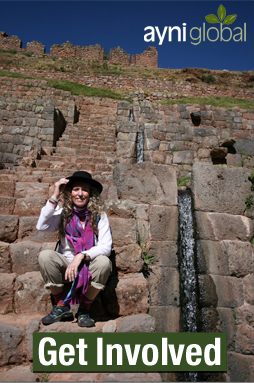
“When we have arrived at the question, the answer is already near.”~ Ralph Waldo Emerson
When we pay attention to the connection of life with nature and events, we can see that meaningful coincidences occur all the time. We might notice that a book gets recommended several times by different people. Perhaps as we ponder a question, we see certain animals like eagles flying overhead or seals swimming by the shore. We keep thinking about someone and they call us. Or maybe different people invite us to the same group or class.
Carl Jung first coined the term “synchronicity” as a way of describing events in life that are not so much connected by causality, but by meaning. Synchronicity happens when two seemingly unrelated events occur simultaneously, or come in a sequence that leads to deeper meaning and better understanding of an event or life situation.
Noting synchronicities is an act of deep listening and then following where the signs lead. In the book “Callings: Finding and Following an Authentic Life,” author Gregg Levoy says it is like “putting on a lens through which we can see our lives as a process of calls and responses…. We have to stay in dialogue, stay vigilant, and be willing to be seized by our encounters by what comes our way.” He asks, “What is the feedback your life gives you?”
The Indigenous Perspective
Long before Jung brought the concept of synchronicity to Western psychology, indigenous peoples around the world were noting divine coincidences. For indigenous groups, synchronicities are considered auspicious events.
Indigenous healers sense messages in wind, rainbows, thunder, and animal appearances. Shamans gather information from what transpires during a ceremony. For example, the Q’ero pakuq watch how the fire responds when a despacho (a carefully created sacred arrangement meant as an offering for specific purposes) is burned as a gift to the Apus.
On one of my trips to Peru, I traveled with my husband and two other couples throughout the Andes and also in the Sacred Valley, receiving teachings and initiations from a Q’ero pakuq. He was delighted to see three couples as part of the group. Threes and twos are important numbers in the Andes. A pair, referred to by the Q’ero as “yanantin,” refers to a sacred coupling, while the number “3” is seen as representing the lower, middle, and upper worlds in their cosmology. So having three sets of twos was considered a good sign! Shamans pay attention to many synchronicities in nature, the energy that people hold, and the dreams they share.
Meaningful Coincidence
A client in my psychotherapy practice (I’ll call her “Frieda”) had a dream about a labyrinth. The labyrinth is an ancient structure used in walking meditation and prayer. It has a circular spiral format that seems to meander, but it is actually a purposeful path associated with wholeness. When one walks a labyrinth, you take a journey to your own center, and then back out again into the world but with a broader understanding of yourself.
In the case of Frieda, she had never been to a labyrinth. But I had just read an article about one located on the grounds of a local church in Seattle. I gave the article to her because I felt that her dream was important and suggested that she might want to visit this special place.
Later, Frieda recounted her story to me. She told me that she had decided to visit the Seattle labyrinth on one sunny afternoon and was surprised to learn after arriving that it was the day of the summer solstice. Frieda approached the labyrinth reverently, blessing herself with water from a nearby fountain. When she reached the labyrinth’s center, she became aware that she was trying to make something happen. She was trying to “do it right” rather than just letting things unfold.
After she decided to surrender to the process, she had a profound transpersonal experience where the labyrinth became very large. Time and space seemed to expand, and she had the sense of being a part of a larger awareness.
Frieda had the wisdom to carry this awareness outside of the structure itself. She sat outside the labyrinth and mindfully watched as people came and went. She became acutely aware that she was looking at aspects of herself in the people who visited the labyrinth.
She watched some people walk over it while talking on cell phones apparently oblivious to the sacred structure beneath them and became aware of her own tendency to go on autopilot.
Frieda watched as someone hurriedly walked the labyrinth as if it were a duty more than a prayer. She wondered about all the ways in which she moved through life in the same way.
A couple carefully walked the periphery of the labyrinth, arm in arm, speaking and laughing softly. She then realized a longing she had been ignoring.
Finally, Frieda observed a young mother delight in the swirling dance of her four-year-old daughter. The mother watched without interruption, and when the girl had finished, the mother gently stroked her daughter’s hair in appreciation. My client understood that she was witnessing unconditional love, a quality missing in her own childhood.
In her therapy session, we talked about the need for her to slow down, to be mindful, and to be in touch with the cosmic mother as well as the healthy, nurturing inner mother and the playful, uninhibited inner child. Synchronicity became a catalyst for Frieda’s emotional healing.
Soulful Connections
In “Crossing to Avalon,” Jungian analyst Jean Shinoda-Bolen states, “Synchronicities are soulful. It is the soul that knows something is meaningful, that is moved by poetry and music, that recognizes what it loves and that it is loved, that is nourished by what we do when what we do comes from our own depths.”
The external world is a reflection of the internal world. When we align with what is soulful in our lives and begin to pay attention, synchronicities become apparent. We see that the inner landscape mirrors the outer landscape in profound ways.
Angeles Arrien, a cultural anthropologist, author, and teacher of cross-cultural indigenous practices, taught that when exploring sacred mysteries and the world of spirit, we need to be good trackers. In other words, we take notice, or track, meaningful events and important experiences so that we can continue communication with the unseen world and with our own soul’s process.
There are many ways to keep track of your soul journey. For example, keep a journal of synchronicities as they occur. In that way, you keep the lines of communication open with your own soul. Life becomes more magical and meaningful when we open to the messages that are all around us; we just need to take the time to notice them. Ask for a sign, and then open your eyes and ears.
References:
– Arrien, Angeles. Metta Institute End-of-Life Care Program, April, 2011.
– Levoy, Gregg. Callings: Finding and Following an Authentic Life, 1997. Harmony Books, New York.
– Shinoda-Bolen, Jean. Crossing to Avalon: A Woman’s Midlife Pilgrimage,1994. Harper Collins Publishers, New York.




Leave A Comment